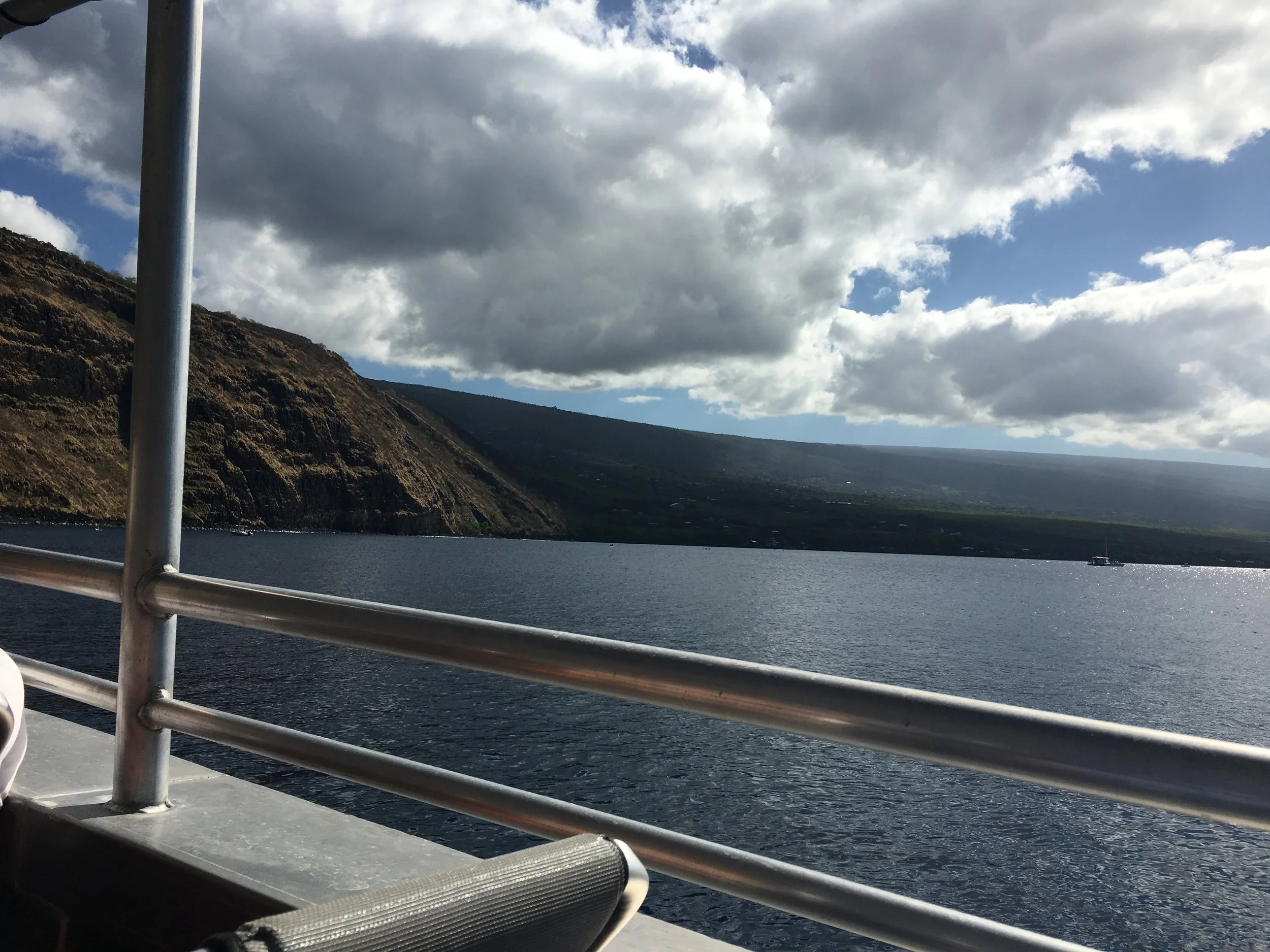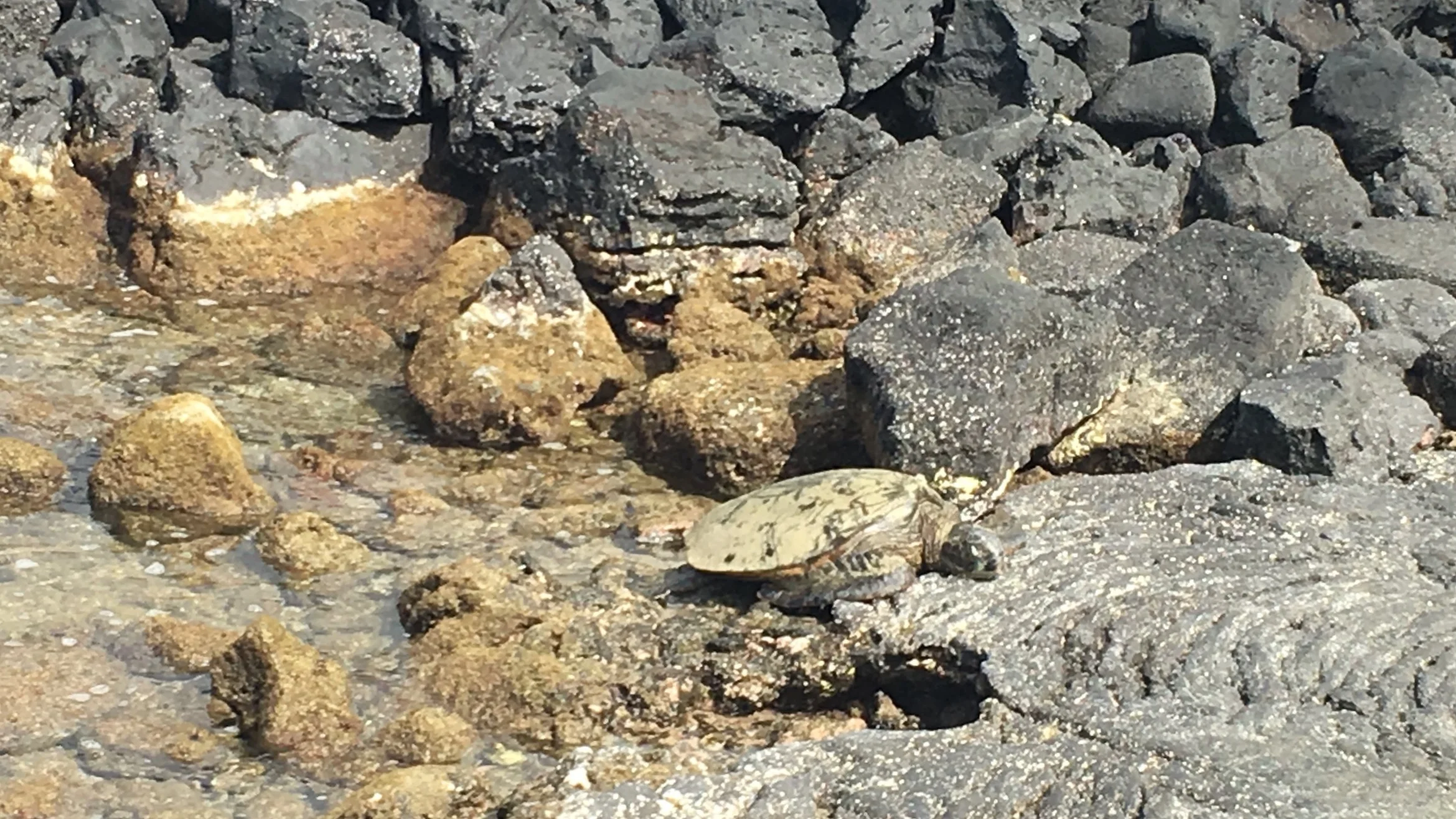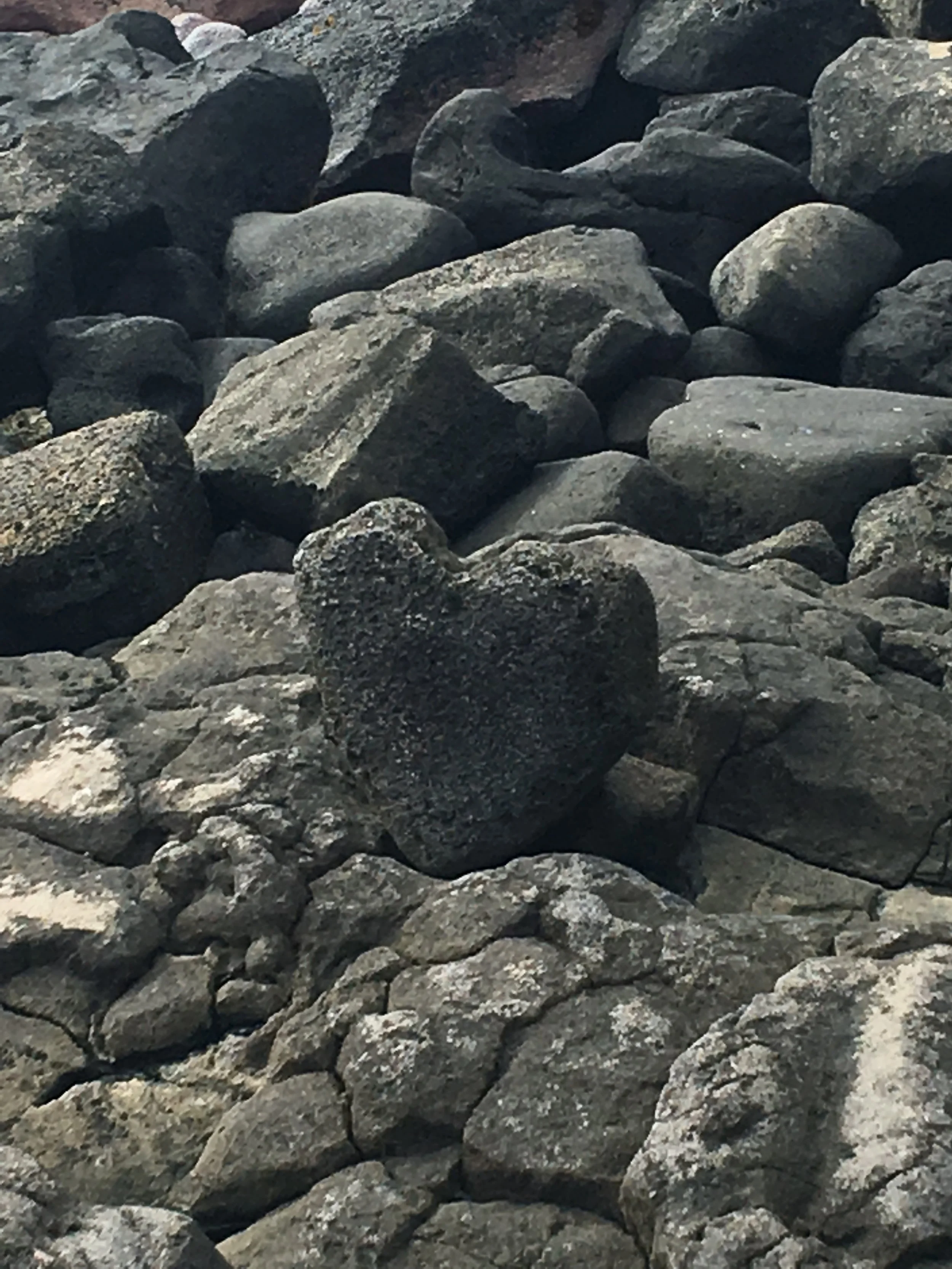We spent our down time between surf lessons and manta rays at the hotel. Before long it was time to head to the bay to meet the boat. The ride to the bay wasn’t very long, about 15 minutes in total, but Kelsey spent that time mildly freaking out. We knew that manta rays don’t eat people and they don’t have teeth, but it was still scary to think about a 10 foot fish coming at you.
When we arrived at the bay, we realized that there are several companies that all leave from the same spot at the same time, so there was a bit of confusion at first while we tried to find our group. Once we found our spot, we got geared up with a wetsuit top (which Kelsey thought was kind of stupid, since they were short sleeved and they didn’t provide bottoms, so they really weren’t going to do much) and a mask/snorkel. We had to wait for a while until the previous group came back with the boat, but we were soon underway. It was helpful to see that there was a mom and her young son with us, because if they let him do it it couldn’t be that bad (right?).
Our guide’s name was Nathan, a blonde kid of about 20, who explained how the snorkel would work. He said that we drop a board, about 10 feet long and 3 feet wide, into the water with a railing along the outside for everyone to hold onto so we stay as a group. The board has lights underneath, which we turn on to draw the plankton that the manta rays eat to the surface, in turn drawing the manta rays. Nathan mentioned that it would be very important to lay on top of the water so that the manta rays would be comfortable coming up close. The water was colder than we expected, and at first nothing was happening other than everyone shivering and slowly bumping into each other. We started in relatively shallow water, so we could usually see all the way to the bottom. Eventually, we saw two big shapes emerging from the gloom, skirting the bottom of the ocean. We had found our goal! They passed below us a few times, and then all of a sudden, we saw one of them pull up and head straight for us, opening its mouth wide. Watching the manta rays feed is an absolutely amazing experience. They come up and right before they hit the board they do a barrel roll, pulling the plankton into their mouths, and avoiding hitting us on the outside of the board by inches every time.
The markings on the back of the rays is very distinctive. Nathan mentioned that the markings of each day make them distinguishable from the rest, and that one of them that was circling us was named “Amanda ray” and that she is one of the most playful of the rays that he sees on a regular basis. We’ve since been looking about for a manta tee shirt for Kelsey to commemorate the experience (side note, she complains that all the cool shirts are for boys and the girls’ shirts are all “sparkly and silly”), and a lot of the designs take a tribal-patterned approach with jagged, stylized animals. Interestingly, this is not far off from how they look from above - there is a very stark black and white pattern on their backs that looks like a piece of tattoo art or a drawing in a coloring book. On their bellies, which we saw as they flipped up under the board, they have a pattern of grey dots like a fingerprint. There are 270 rays that hang out along the Kona coast, and each has a name and can be recognized by the dot pattern (“a lot of punny names, to be honest,” per our guides). 2 rays swirled around us for a full 30 minutes, alternating and occasionally competing for the plankton that the blue light attracted. A third, smaller ray eventually joined before they moved on, silently disappearing into the dark water.
The next morning we joined a boat full of folks as part of a morning snorkel that advertised a “dolphin swim” that felt a little hyperbolic. Eating breakfast one morning, our waiter had paused at our table and pointed dismissively at a pack of a few dozen small boats lingering in the shallow harbor in front of our hotel. “Look at them all out there bothering the dolphins.” We looked. At this point, Kelsey had never actually seen a dolphin. We kept eating, unconvinced. If there were dolphins in the harbor, we couldn’t see them. The dolphin swim seemed a little far fetched, and the boats had seemed like a mob. So we’d taken the morning snorkel mostly for a ride to Kealekekua bay, where Jake had had a good time 8 years prior. Others on the boat were similarly pessimistic, so when we slowly passed the harbor, then moved on without a dolphin, we weren’t surprised. Then the boat stopped, further along the coast. No one else was there, but we’d found a pod of 6 spinner dolphins and put on our masks to get a closer look.
Our pessimism was totally unfounded. The dolphins were amazing, and extremely playful, coming up close and then skittering away, only to jump out of the water a minute later just a few feet away. We were prepared not to see any dolphins, so this was an unexpected treat that made the trip. The guides explained that the dolphins were technically sleeping, but as active breathers this meant they were just slowly circling. Two of the larger dolphins became more alert and swam closer to get a look at us. After a while they started to get playful, even jumping out of the water in spirals. The other 4 never veered from a lazy figure 8, protective of an adolescent tucked under a possible mother. They stayed their distance and swum deeper, only coming up rarely and never splitting their formation. Once the dolphins swam away, we got back on the boat to continue on to Kealekekua bay. On the way there, Jake spotted a humpback whale, which we tried to glimpse again, but were unfortunately unsuccessful.
Upon arriving at the bay, we saw about a dozen other boats and kayakers who also had the same idea. Jacob, our guide for the day, explained that this is one of the best preserved coral reefs in the world, because it is protected as a national park, meaning that we could not come ashore or touch anything, but we were welcome to swim around to our hearts content. He also mentioned that the idea for the drop off in Finding Nemo came from this area, since the coral is attached directly to the cliff that descends into the water, so you could be in an area that’s 3 feet deep, but a yard over it could be 30 feet deep. We were tired and a little cold from our earlier swim, but the reef as beautiful.
Jake swum past a colder area that sent Kelsey back to the boat, looking for larger fish or eels in the deeper water. Nothing. Upon swimming back to the boat, however, a shape came slowly swimming into the shallower water. At first it looked like the dolphins of the morning - around 6-8 feet long and slow, deliberate. It came into view. A white tip reef shark, Jacob explained later. It scanned the edge of the reef, then slowly turned back to sea. Jake lifted his face from the water and made eye contact with a mom cradling a kid in water wings. They looked eyes and made the “AAAH!” face in a silent scream. Another bucket list item. If it wasn’t for the time spent with the gentler dolphins, the sight would have been far more shocking, as it must have been for some swimmers, who had swam into shallower water in a panic. We had lunch on the boat and then headed back up the coast to the bay.
The rest of the day was uneventful, we shopped around a bit and bought t-shirts and a Christmas ornament, had drinks at the ocean-side bar - which was super windy - and went to dinner at Huggo’s, where we went on our first night in Kona. After that we headed back to pack and go to bed early to prepare for our next adventure - Kauai.


